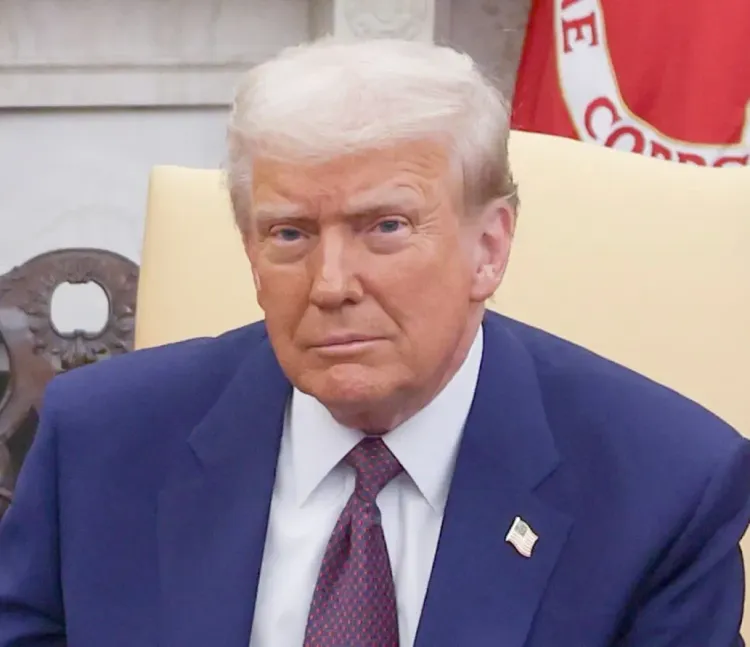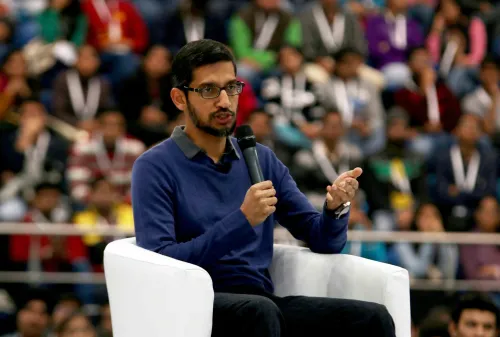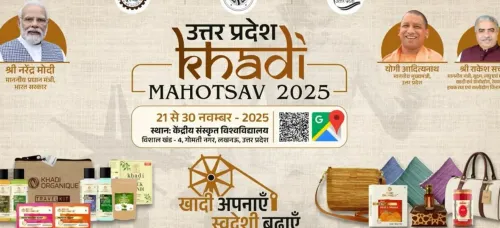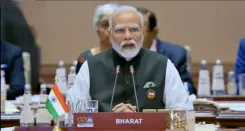Did Trump Criticize Goldman Sachs CEO for 'Bad Prediction' on Tariff Effects?

Synopsis
Key Takeaways
- Trump critiques Goldman Sachs CEO for inaccurate tariff forecasts.
- US consumers could see a rise in tariff costs to 67%.
- Economic forecasts are under scrutiny amid trade tensions.
- Trump threatens heightened tariffs on Indian goods.
- Constructive dialogue between economic leaders and policymakers is essential.
New Delhi, Aug 13 (NationPress) US President Donald Trump has taken aim at Goldman Sachs CEO David Solomon, asserting that the bank's assessment of the effects of his tariff strategies on American consumers was a misjudgment. Trump expressed his views on his Truth Social platform, stating that David Solomon and Goldman Sachs fail to acknowledge the credit that is rightfully deserved.
He continued, "They made an inaccurate forecast some time ago regarding both the market impacts and the tariffs themselves, and they were mistaken, just as they are wrong about many other issues."
Trump suggested, "David should hire a new economist, or perhaps he should consider a career as a disco jockey, rather than managing a major financial firm."
While Trump conveyed his disappointment with the bank, he did not elaborate on specific reasons. This comment came after a recent note from a Goldman Sachs economist highlighted that the effects of new tariffs on consumer prices were only beginning to manifest.
As of June, US consumers had absorbed approximately 22 percent of the costs from tariffs, with projections indicating that share could rise to 67 percent if the recent tariffs follow historical trends, according to Goldman Sachs.
Reports indicate that Trump’s trade advisor Peter Navarro also criticized Goldman Sachs, mentioning, "The only entity that has less credibility regarding their data than the US Bureau of Labor Statistics these days is Goldman Sachs."
Trump's remarks came in the wake of data released on Tuesday showing that core inflation increased in July, despite a slower rise in goods prices. This alleviated concerns about tariff-induced price pressures and heightened anticipation for a Federal Reserve rate reduction in September.
The President had implemented 25 percent tariffs on Indian goods, citing elevated trade barriers. On August 6, he threatened to escalate this to 50 percent, pointing out that India continues to purchase oil from Russia.
The US is insisting on zero-duty access for all its products entering India while remaining resistant to offering concessions on sectoral tariffs, which include 50 percent for steel, aluminum, and copper, and 25 percent for automobiles and auto parts.









